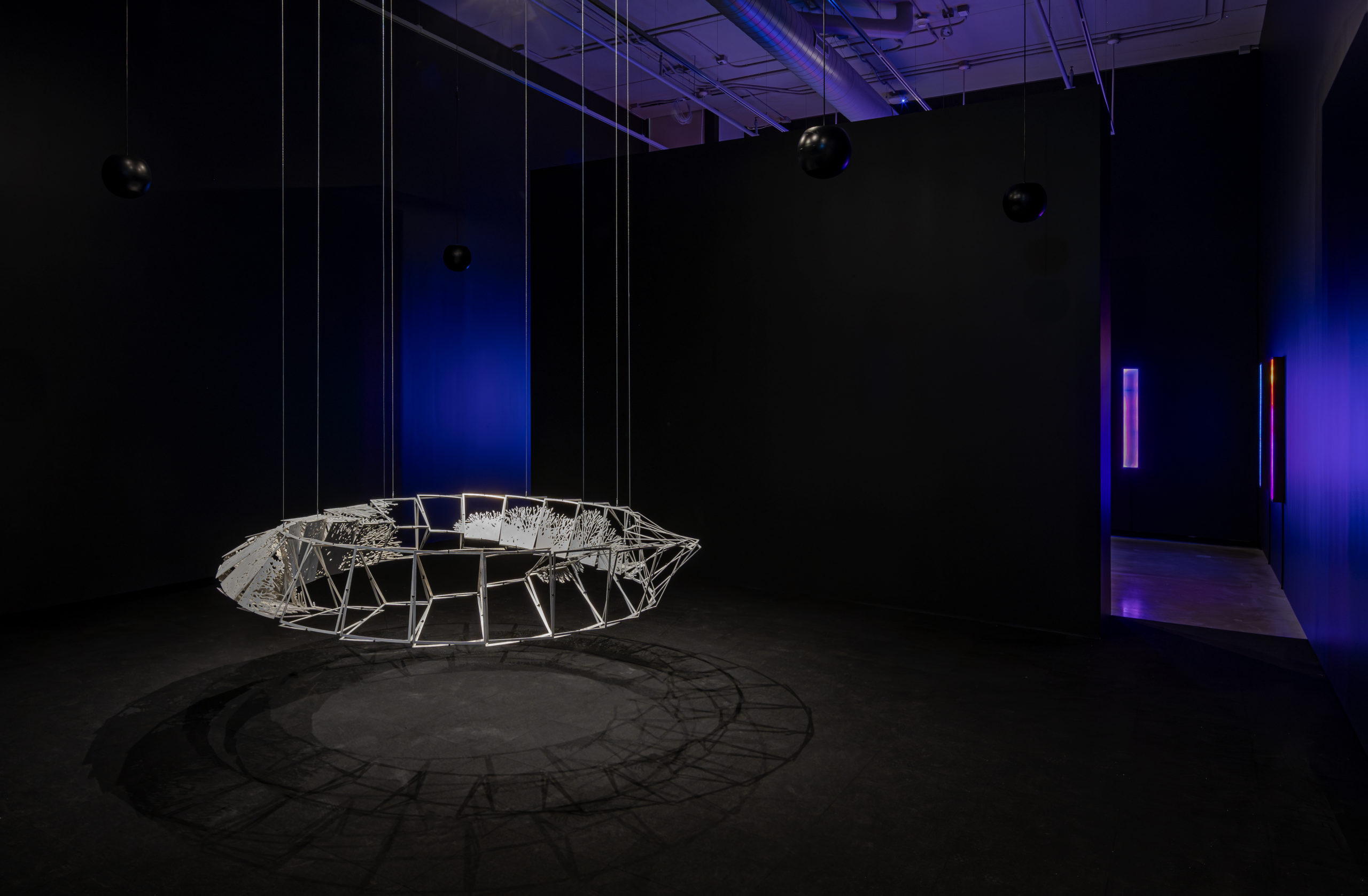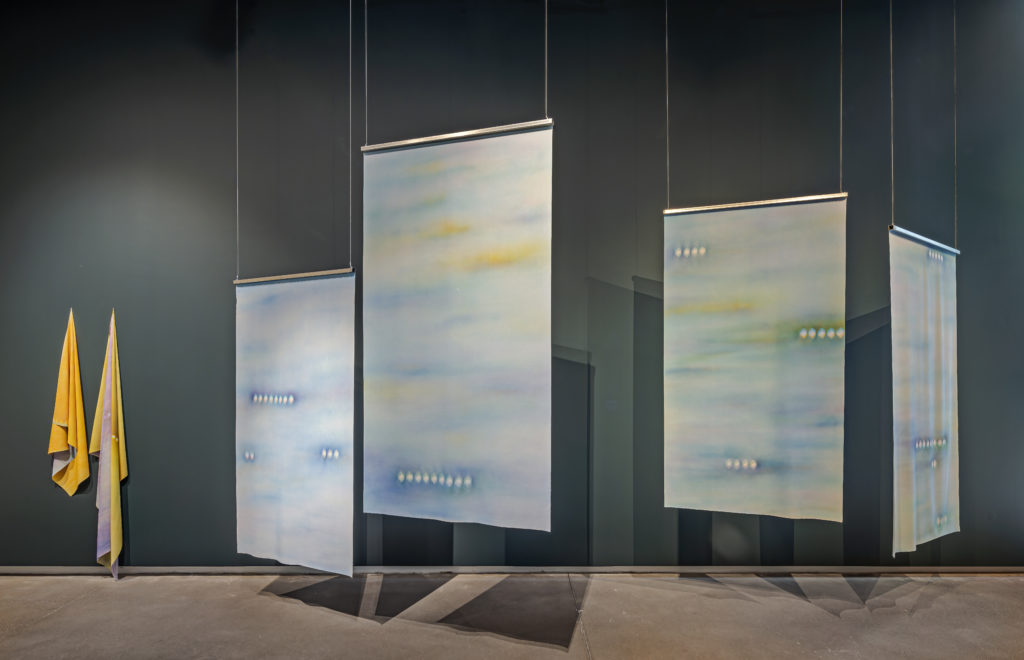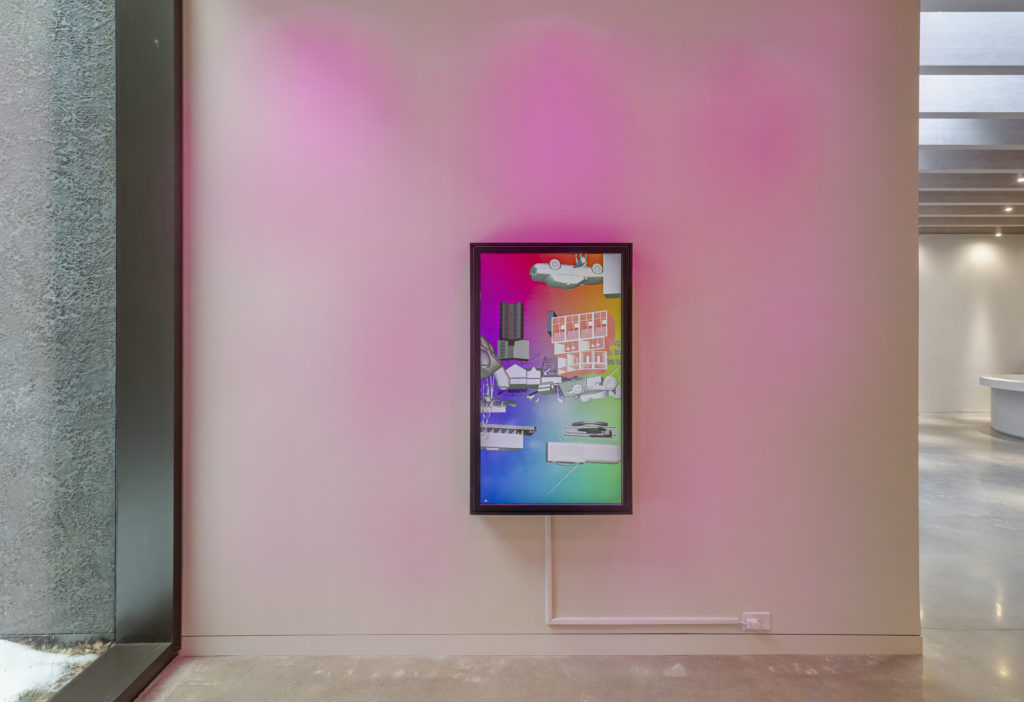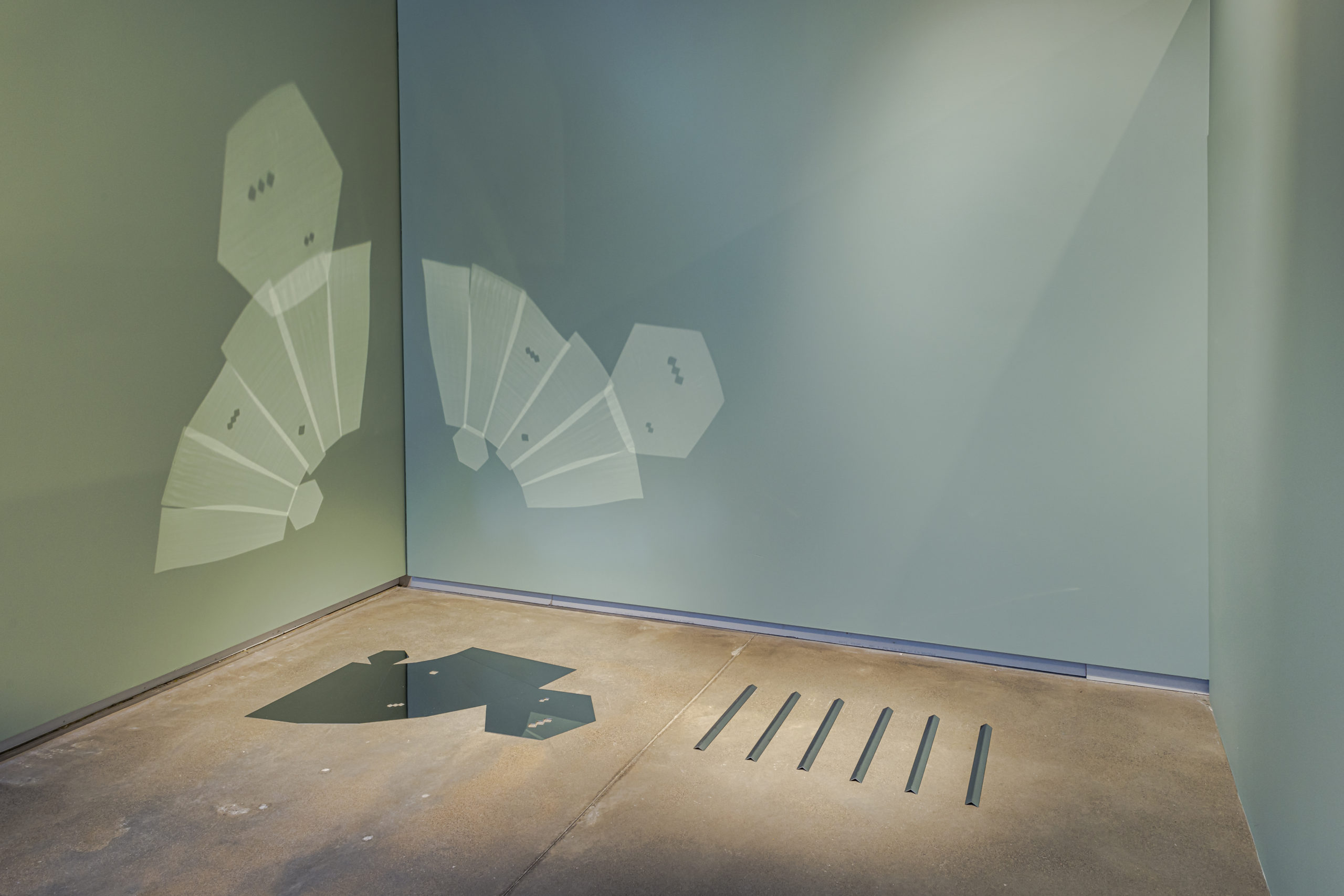For the past year, many of us have walked past the scaffolding between the Accolade East and West buildings, where the construction site piqued curiosity and caused the occasional inconvenience when rushing to early morning classes. This site has since transformed into the Art Gallery of York University’s (AGYU) brand-new space: The Joan and Martin Goldfarb Gallery.
Upon entering the gallery, visitors are greeted with three expansive gallery rooms and a pavilion reserved for artist talks and performances. An Ocean to Livity and Unfolding Worlds were the featured exhibitions on Jan. 31, featuring works by two internationally prominent Canadian artists whose pieces embodied culture, innovation, and abstraction through a vibrant blend of sculpture, painting, installations, and technology.
Upon stepping into the vast darkness of the room, the sounds of breathing and the trickling of water surround you, immersing you in the intricate and colourful world of Charles Campbell’s An Ocean to Livity. Inspired by the Rastafari concept of livity, every corner of the exhibit was filled with life, colour, and resilience. According to Campbell, the exhibition began with the central sculptural piece: a tree.
“The exhibition started with this tree here, that form is built on the form of our lungs. It was built as this monument to Black breath,” he explains. “It started with this tree, but I turned it into an inverted lung. I tried to think of it as our internal power, and also both the necessity and fragility of our breath.”
The most striking works in Campbell’s exhibition were perhaps the Breath Portraits. These colourful, intricate abstractions of form and sound waves were accompanied by audio recordings of the people featured in the portraits. When asked about this seamless blend of interactivity, technology, and sculpture, Campbell shares: “I don’t think of myself as a technology-based artist; I’m doing what I feel is necessary and appropriate for the work. So one of the things that came out of this work along breath was these recordings of breath I was doing, and then I wanted a way for those to have a visual presence in the room.”
Campbell further notes that the idea for the portraits came to him when working with spectrograms. “It kind of clicked that, ‘Oh, what if the visual representation became these spectrograms?’ […] And then I started to look at more specific individuals. I developed the technique of bringing what I felt was this life force, or what was present in the room for me when I was doing those recordings, into a visual form.”
Campbell’s work celebrates Black resilience, creativity, and vitality. He expertly captures the significance of Black breath and the life force that continues to grow and flourish despite generations of hardships through his use of lichen. Campbell symbolises our reciprocal relationship with nature and the significance of our ancient roots, explaining, “The air we breathe isn’t actually the oxygen expelled from trees today, it’s actually the oxygen that has accumulated through millennia. So every inhale and exhale is actually a time machine. We are inhaling this ancient oxygen and that’s what allows us to live.”

Despite the focus on themes of hardship, the story that unfolds on the gallery walls is one of triumph and joy. When asked about the trauma and weight of these stories, Campbell emphasizes the joy embedded in his works: “It’s not that the trauma doesn’t exist, but there are also these really, really rich and joyful moments that would come up, and come up often.”
In this exhibition, Campbell’s exploration of Black heritage, resilience, spirituality, and abstraction opened a direct dialogue with many of the themes, techniques, and values found in Unfolding Worlds, the work of artist Maryam Taghavi. Taghavi’s exhibition, which incorporated architecture, script, and painting, presented a fascinating ensemble that felt like an authentic celebration of life, culture, and the endless possibilities we carry with us through our unique histories.
The focus of the exhibition was on the figure known as the noghte, the dot symbol in Arabic-based scripts. More specifically, in Taghavi’s work, the noghte is used as an element of Farsi and, much like many of her works, is rich with influences from Persian calligraphy and ancient styles of script painting (Naghashi-Khat). Taghavi describes the motivation behind her work as “the perception of language.” She further expands on her use of the noghte: “It could translate to a dot, a point, or a period. But what its function is in the alphabet is that it determines the sound of many letters in the Persian and Arabic alphabet, but in and of itself [it] doesn’t have a sound. It’s silent.”
The noghte in calligraphy is penned as an angular diamond shape, which becomes extremely relevant, as this diamond shape serves as the basis of all measurements in Persian calligraphy. While the masters labour over the proportions of the alphabet as they elongate the curves of shin and gaf, it is the noghte that serves as the unit of measurement, ever present yet silent.
Taghavi’s use of scripture and appreciation for Persian poetry is not unique to Unfolding Worlds. In her 2023 permanent installation in Terminal 5 Arrivals at Chicago O’Hare International Airport, Spell for a Safe Passage, Taghavi uses calligraphy, repetition, and abstraction to reinterpret the ancient ottoman spell of the seven sleepers into a modern representation of the Women, Life, and Freedom movement in Iran.
Perhaps the most striking part of Unfolding Worlds were the architectural pieces. Taghavi’s brilliant use of prisms embedded in the walls allowed the viewer to peer through noghte cut-outs and glance into the kaleidoscopic world of possibilities. Taghavi explains how experimenting with prisms has been a staple of her work since 2018, further expanding on the meaning they hold: “The fact that what is enabling you to see inside the prism and what is the subject of that world of infinite is the noghte means that there is a universe within the noghte.”
Taghavi’s work, while innovative and bold, is a tasteful blend of authentic and deeply personal Persian influences. Her exploration of spirituality through scripture is a continuation of a long-running tradition. Taghavi’s limestone sculpture “Heechi” is a direct reinterpretation of the work of Iranian poet and artist Parviz Tanavoli and his four-decade-long spree of creating Heech statues. These ever-evolving figures have been carved, sculpted, molded, or bent into the distinct letters of the Farsi word for “nothing” — Heech. Tanavoli has left many of these statues across Iran, the U.S., and Canada through the years, and Taghavi’s “Heechi” is a refreshing retelling of this ancient Persian artistic practice. “Heech is like nothingness; it’s rooted in Sufi practices, nothingness as wholeness. So it has this divine register to it.”

While honouring this ancient spiritual and divine figure, Taghavi reimagines the word in a mundane setting, adding the suffix “i” to the word to create Heechi, aiming to capture “moments of magic in the everyday.”
While both Ocean to Livity and Unfolding Worlds explore the tension between heritage, space, and abstraction, gallery curator Felicia Mings opened the conversation about another featured piece, “From Longhouse to Highrise: The Course of Empire” by Dele Adeyemo. This commissioned interactive piece retells the stories and histories of the land and its course of progress. As Adeyemo puts it in his artist statement: “Through this territory, we are asked to consider what it means to be caught in the course of empire. The project comprises a multidimensional archive of space; a sonic soundscape containing voices from within and in proximity to the university campus, paired with architectural projections of the territory, revealing the entangled histories of the land, development, and resistance to the catastrophe of empire.”
Mings further explored this theme, emphasizing the deep connection between the AGYU and the land it occupies. “We have a long history — the Art Gallery of York University has been around since 1988,” she explains. The work was commissioned by the gallery in 2022, a conscious decision to emphasize the significance of the gallery’s move to a larger space, and its ongoing relationship with the land it occupies.

The opportunity to engage with exhibitions so closely connected to the students, faculty, and staff of our community is one of the most notable outcomes of having access to this new space. Witnessing the success of immigrant artists who unapologetically share their introspective interpretations of culture, history, and modernity is an experience worth cultivating. “I’m very excited to work with artists who are contemporary, who are really of this moment, but are also thinking about or tapping into history or narratives from other parts of the world that are just not as visible or talked about as they should be,” says Mings.
Exhibitions like these provide the gallery with a platform for meaningful dialogue and a deeper exploration of our community’s diverse needs through art and creativity. The Goldfarb Gallery is open Tuesday–Saturday from 12–5 p.m. and admission is free. Make sure to stop by and experience firsthand what this new space has to offer.


